Fukushima Dairy......
The desert of the real.......
Independent journalist Ryuichi Kino went to Fukushima I Nuclear Power Plant in June 2013, his fourth. Along the way, he went inside the ex-evacuation zone (no-entry zone within 20-kilometer radius from the plant) and took these photos, and posted onhis Flickr site. (Copyright: Ryuichi Kino, all rights reserved.)
Kino wonders aloud in his tweet, "How do they expect the residents to live here? Will the tanks full of contaminated water and the reactor buildings that blew up disappear in five years?"
The following photos are only part of 54 photos of the set.
=================
Naraha-machi, where Fukushima II (Daini) Nuke Plant is located. Farm road lined with plastic bags containing contaminated soil removed from farmland.
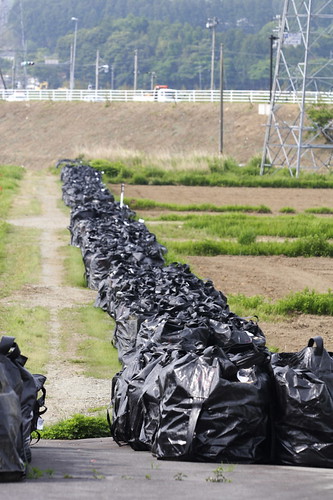
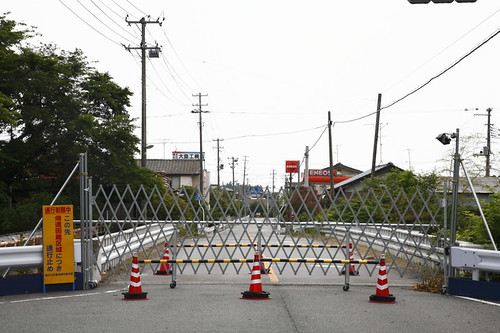


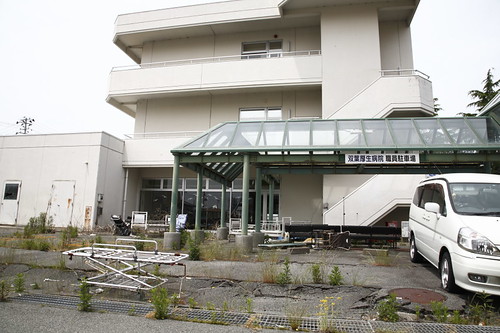
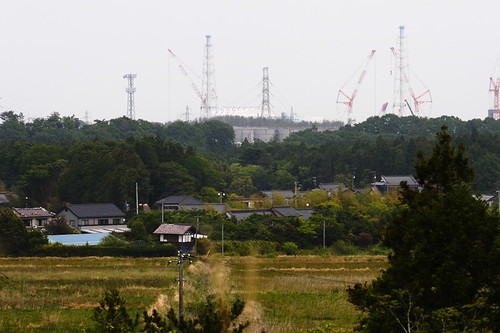
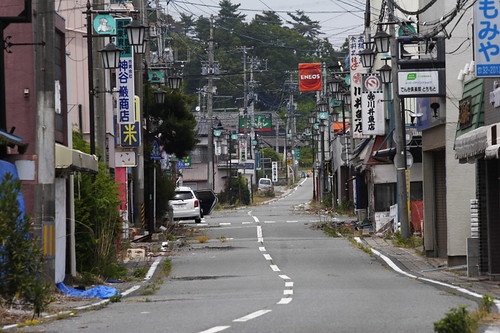
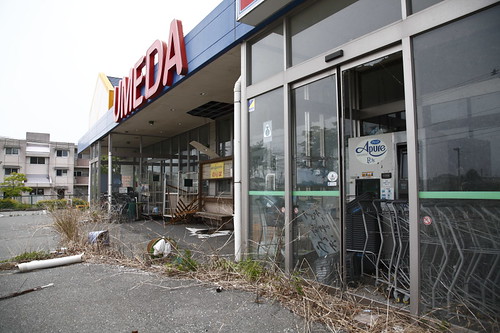
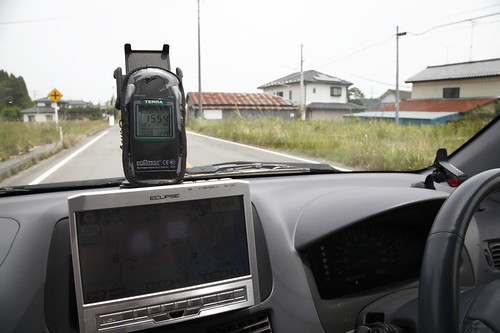
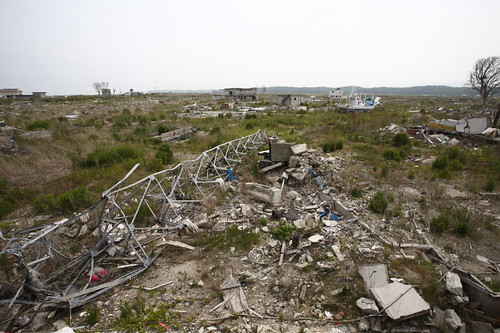
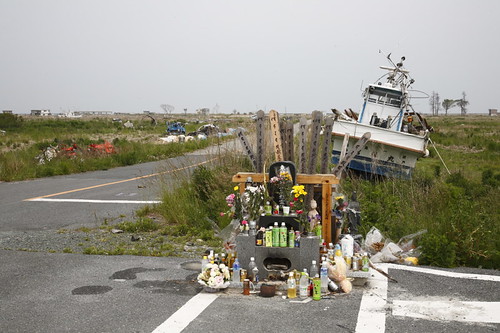
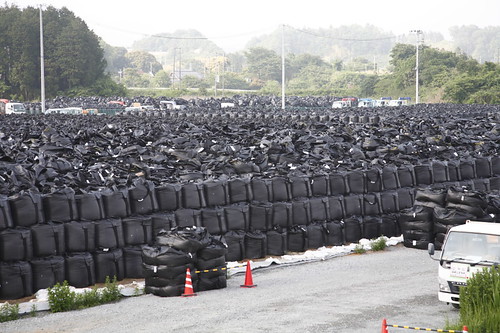


NRA spokesman “We don’t know what our inspectors actually check about the contaminated water tanks”
Posted by Mochizuki on September 24th, 2013 · 3 Comments
On 9/20/2013, Tepco announced they found 5 bolts loosened and the sealing parts widely detached in the tank that experienced 300m3 leakage.
(cf, 300m3 leakage tank had 5 loosened bolts, sealing parts widely detached [URL])
In the regular press briefing of 9/24/2013, the spokesman of Nuclear Regulation Authority commented they don’t know what the inspectors actually check about the contaminated water tanks in Fukushima nuclear plant.
It was the answer for the inquiry of the press.
Nuclear Regulation Authority is to supervise Tepco’s patrol.
Press “Fukushima worker said contaminated water tanks are made by amateurs” → NRA “We don’t know”
Posted by Mochizuki on September 24th, 2013 · 2 Comments
Following up this article..NRA spokesman “We don’t know what our inspectors actually check about the contaminated water tanks” [URL]
In the regular press briefing of 9/24/2013, TV Asahi inquired Nuclear Regulation Authority about if they recognize the contaminated water tanks are made by amateurs.
TV Asahi commented they found that out from the interviews with Fukushima workers.
Nuclear Regulation Authority answered they don’t know about that.
JP Gov “Reactor5&6 to be reused for contaminated water storage area and simulation for decommissioning reactor1~4″
Posted by Mochizuki on September 24th, 2013 · 2 Comments
Following up this article..JP PM Abe requested Tepco to decommission Fukushima reactor5 and 6 [URL]
In the press conference of 9/20/2013, Motegi Minister of Economy, Trade and Industry stated they plan to reuse reactor5&6 for the simulation site to decommission reactor1~4, and also the newly made space would be reused for the contaminated water storage area.
Tepco is running out of the space to keep the increasing contaminated water.
3 trillion yen of financial support is not enough for Tepco to compensate / 74 billion yen newly provided to Tepco
Posted by Mochizuki on September 24th, 2013 · 1 Comment
On 9/24/2013, Tepco announced they received 74 billion yen of the financial support from the Nuclear Damage Liability Facilitation Fund.
They have already received 3 trillion yen of the financial support, but still they can’t afford the compensation payouts to be completed by the end of October 2013.
Their press release is below,
The desert of the real.......
MONDAY, SEPTEMBER 23, 2013
Photo Essay by Ryuichi Kino: Time Frozen in Ex-Evacuation Zone in #Fukushima
Independent journalist Ryuichi Kino went to Fukushima I Nuclear Power Plant in June 2013, his fourth. Along the way, he went inside the ex-evacuation zone (no-entry zone within 20-kilometer radius from the plant) and took these photos, and posted onhis Flickr site. (Copyright: Ryuichi Kino, all rights reserved.)
Kino wonders aloud in his tweet, "How do they expect the residents to live here? Will the tanks full of contaminated water and the reactor buildings that blew up disappear in five years?"
The following photos are only part of 54 photos of the set.
=================
Naraha-machi, where Fukushima II (Daini) Nuke Plant is located. Farm road lined with plastic bags containing contaminated soil removed from farmland.

Tomioka-machi, where Fukushima II Nuke Plant is located. The fence bars entry to the "zone where the residents won't be able to return for 5 years". As if the radiation is suddenly higher beyond the fence.

JR Joban Line Yonomori Station in Tomioka-machi. Nature is taking over.

Futaba-machi, from the distance. Half of Fukushima I Nuke Plant is located in Futaba-machi. The arch in the left of the picture says "Nuclear Power to Build Affluent Society and Town".)

Futaba Kosei Hospital. Doctors, nurses, and patients were still trying to evacuate when Reactor 1 building exploded in hydrogen explosion on March 12, 2011. Beds and stretchers abandoned in haste.

Okuma-machi, with Reverse Osmosis waste storage tanks, exhaust stacks, and tall cranes working on the broken reactors in the backdrop. Would you feel safe, returning to the area?

Okuma-machi. It looks almost normal.

Until you look up close.

Somewhere within the ex-evacuation zone. The survey meter shows 15.54 microsieverts/hour radiation (gamma).

Ukedo District in Namie-machi, along the Pacific Ocean. Total wipe-out.

Memorial for the dead, in Ukedo District in Namie-machi. Someone does come here (probably more than one) to offer flowers and drinks.

As far as eyes can see, plastic bags with radioactive waste from decontamination along Route 6 in Naraha-machi. As talks of building intermediate storage facilities for contaminated waste have stalled in the ex-evacuation zone, these bags are left like this in many locations.

Route 6 in Tomioka-machi. Buses carry workers to Fukushima I Nuclear Power Plant.

Guards manning the checkpoint to the "difficult for the residents to return" zone. Kino writes that they are from private security company, and that:
以前の警戒区域は法的根拠があ ったので警察権を行使することができたけど、今の帰還困難区域は強制力がないので、法的には立ち入りを止めることはできない。中に入らないという制限 は、ある意味で市民の協力により成り立っているということになる。
The evacuation zone had a legal basis, and the police authority was used to enforce it. But the current "difficult for the residents to return" zone does not have legal force behind it, and there is no way to legally stop one from entering the zone. Restriction of entry is, in a way, made possible by the cooperation of the residents.

The national government is essentially telling the the residents, "At your own risk."
For more photos of the ex-evacuation zone by Kino, go to his Flickr page, here.
For more photos of the ex-evacuation zone by Kino, go to his Flickr page, here.
Energy News items....

No comments:
Post a Comment